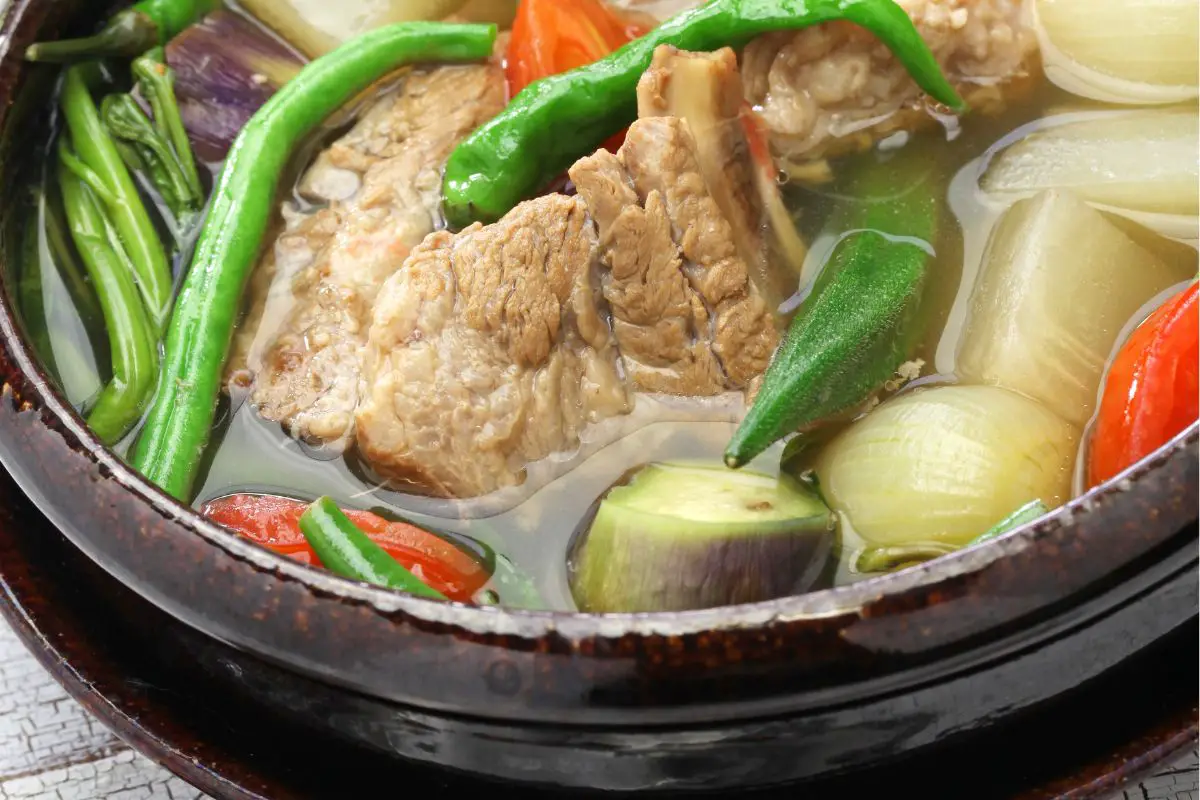Enjoy Typical Filipino Flavors With Easy-To-Follow Recipes
Checking out standard Filipino food uses an one-of-a-kind chance to involve with an abundant tapestry of flavors and cultural stories. Each meal, from the iconic adobo to the dynamic sinigang, informs a story that reflects the Philippines' varied cooking heritage. By embracing easy-to-follow recipes, any individual can recreate these beloved dishes at home, cultivating links with household and pals through shared experiences. Nonetheless, recognizing the crucial active ingredients and methods is essential for achieving genuine taste. As we explore these culinary traditions, one might ask yourself just how to best bring the heat of Filipino friendliness to their own dining table.

Summary of Filipino Cuisine
Discovering the vivid tapestry of Filipino food discloses a rich social heritage affected by numerous historical and geographical factors. As an outcome, Filipino food is a special mix of Malay, Spanish, Chinese, and American aspects.
Rice serves as the keystone of Filipino meals, usually accompanied by a selection of veggies, meats, and fish and shellfish. Using strong flavors is a characteristic of the food, with ingredients such as garlic, onions, ginger, and soy sauce playing pivotal duties. The focus on public eating reflects the Filipino society of friendliness and family connections.
Street food additionally plays a significant role in the cooking scene, showcasing neighborhood components and innovative food preparation approaches. As the Philippines proceeds to accept globalization, the blend of conventional and modern influences can be seen in contemporary Filipino recipes, additionally enriching its culinary identification. Filipino food recipes. Overall, Filipino cuisine is a testimony to the nation's background, society, and dynamic spirit
Must-Try Typical Meals
Filipino cuisine is ideal experienced via its typical meals, each offering an one-of-a-kind understanding into the nation's diverse culinary heritage. Amongst the must-try dishes is Adobo, a mouthwatering stew typically made with poultry or pork, marinated in vinegar, soy sauce, and garlic before being slow-cooked to perfection. Its abundant and tangy taste profile represents the heart of Filipino comfort food.
One more legendary dish is Sinigang, a sour soup typically prepared with tamarind, tomatoes, and different vegetables. This meal can feature pork, shrimp, or fish, and is cherished for its revitalizing preference and warming up qualities.
Lechon, a whole baked pig, is a centerpiece at Filipino parties, recognized for its crispy skin and tender meat. It embodies the festive spirit of Filipino gatherings.
For those food craving something pleasant, Halo-Halo is a wonderful dessert incorporating crushed ice, sweetened fruits, jellies, and covered with leche flan and purple yam.
Each of these traditional dishes encapsulates the significance of Filipino society, inviting anybody to enjoy the dynamic flavors and abundant history that define the island chain's culinary landscape.
Step-by-Step Recipes
Cooking authentic Filipino dishes in your home can be an enhancing experience that brings the vibrant tastes of the Philippines right into your kitchen area. With a huge selection of conventional dishes to choose from, employing step-by-step recipes allows both newbie and experienced chefs to understand the methods and tastes important to Filipino food.
Begin by choosing a dish that intrigues you, such as adobo, sinigang, or lumpia. Each dish often includes a comprehensive active ingredient list adhered to by clear directions, guiding you with the cooking procedure. Start with prep work, which may entail marinating proteins, slicing veggies, or gauging seasonings. This foundational action guarantees a smooth cooking experience.
As you advance, pay close focus to cooking strategies one-of-a-kind to Filipino cuisine, such as sautéing (ginisa) or stewing (nilaga) These approaches can considerably improve the deepness of flavor in your meals. Additionally, timing is essential; adhere to the suggested cooking times to accomplish the best texture and taste.
Necessary Ingredients and Tips
Often, the trick to mastering Filipino food depends on understanding and using necessary ingredients that define its unique flavors. Central to lots of recipes are staples like soy sauce, vinegar, garlic, and ginger, which add to the one-of-a-kind balance of mouthwatering, sour, and pleasant notes. Soy sauce works as a base for marinades and sauces, while vinegar, specifically walking cane vinegar or coconut vinegar, imparts here are the findings a tasty illumination that is critical in dishes like adobo.
Rice is a crucial part of Filipino dishes, usually offered alongside primary training courses to soak up tasty sauces. For a touch of credibility, decide for jasmine or long-grain rice. Furthermore, making use of fresh fruit and vegetables such as tomatoes, check it out environment-friendly beans, and eggplants enhances the recipe's vibrancy and dietary worth.
Do not forget the significance of herbs and flavors, such as bay leaves, lemongrass, and chili peppers, which boost the flavor profile. When cooking, remember that persistence is crucial-- enabling components to fuse with each other results in richer tastes. Lastly, accept the practice of sampling as you go; this will certainly enable you to adjust spices and accomplish the ideal equilibrium that defines Filipino cuisine.
Offering and Delighting In Filipino Dishes
Comprehending the subtleties of Filipino cuisine expands past prep work and components; it encompasses the means meals are served and delighted in. The Filipino dining experience is characterized by public sharing, advertising a sense of togetherness and party. Commonly, dishes are presented in huge servings, enabling restaurants to take part in a variety of flavors.
Rice, a staple in Filipino dishes, is typically functioned as the foundation whereupon the other meals remainder. Going along with viands, such as adobo, sinigang, or lechon, are placed in the facility of the table, inviting visitors to offer themselves. Filipino food recipes. This method not just promotes an unwinded ambience however additionally motivates discussions and connections among diners
:max_bytes(150000):strip_icc()/Filipino-Features-Soups-and-Stews-1e81ba12ce10481caf3ff58981c347ab.jpg)
Final Thought
In verdict, standard Filipino cuisine provides a rich tapestry of tastes and cultural significance, inviting expedition with its varied recipes. Engaging with this vibrant cuisine not only enriches the dining experience but also maintains and celebrates the heritage of the Filipino people.